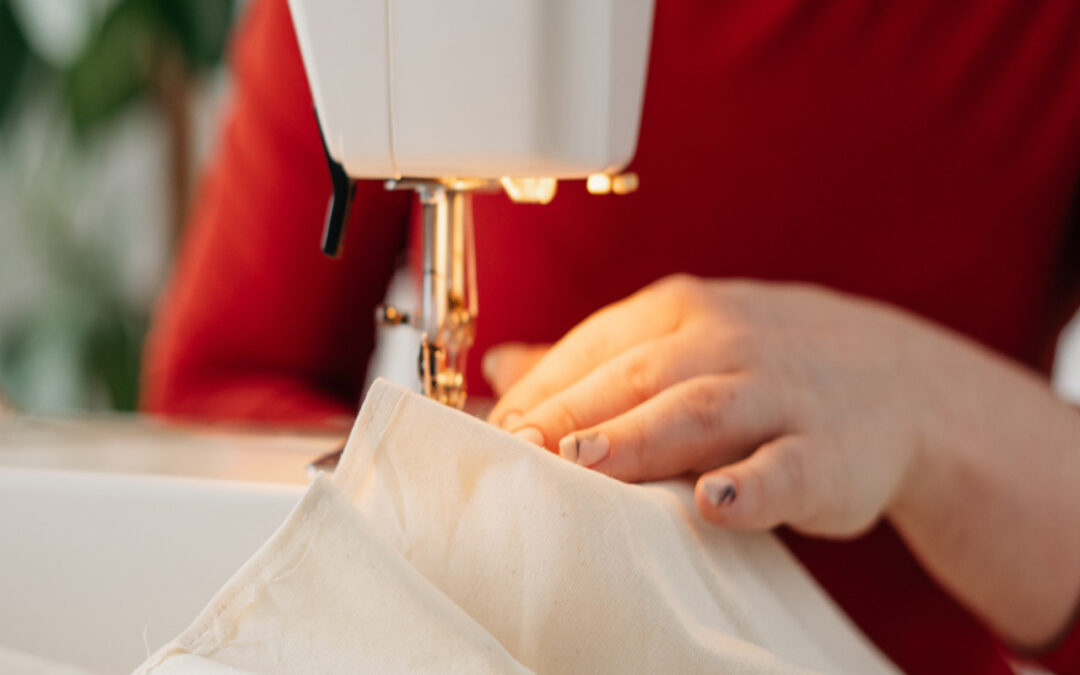A blind stitch is a terrific stitch to learn for hemming just about anything… when you don’t want the stitching to show through on the face of your fabric.
A blind hem stitch consists of 3 straight stitches in a row and one zig-zag stitch. The idea is to have the straight stitch on the folded material of the hem and the zig-zag just catch a few threads of the main panel of fabric. When you turn your piece right sound out, you will barely see small tacking that is holding your bottom hem in place.
You can use this technique for hemming lined drapes, curtains, roman shades, side hems for draperies, and hemming clothing.
The one thing I want to say about this stitch is to practice before you use this technique on your projects. The thicker your material, the trickier this stitch is. So practice, and worst-case scenario, you hand stitch the hem or straight stitch it.
You will need a blind hem presser foot, also known as blind stitch foot for your sewing machine, AND a blind hem stitch on your machine.
1. Lay your fabric with the folded hem facing up with the outer folded edge of the hem pointing toward your sewing machine.
2. Fold the pinned bottom hem under the fabric.
3. Leave ¼” of the folded hem peeking out from under the fabric. So… you will have your fabric panel laying right side down, with the folded hem folded under the panel… leaving only 1/4″ showing from under the panel.
4. Slide the fabric under your presser foot with the folded edge of the fabric panel against the flat vertical bar of the presser foot. The ¼” piece of the hem peeking out from under the panel is under the needle.
5. The needle should stitch the straight stitch in the ¼” of the hem and swing to the left to catch the folded edge of the fabric on the zig-zag. If this is done correctly, you will only see tiny vertical stitches across your hem on the front of your shade.
Practice this stitch on similar fabric and thickness to make sure your zig-zag is not too wide as this will cause a larger vertical stitch on the front of your shade, which you don’t want.
Mastering this stitch will take your projects to the next level. It’s the next best thing to an industrial hemmer. Most of us can’t afford a hemmer, but you can very similar effects with the blind hemstitch.
So, practice, practice, practice… and use if it for all hems including your side hems.
Happy sewing!
Jennifer Thoden
ps. for more free sewing tips and sewing projects visit www.simplesewingprojects.com.


